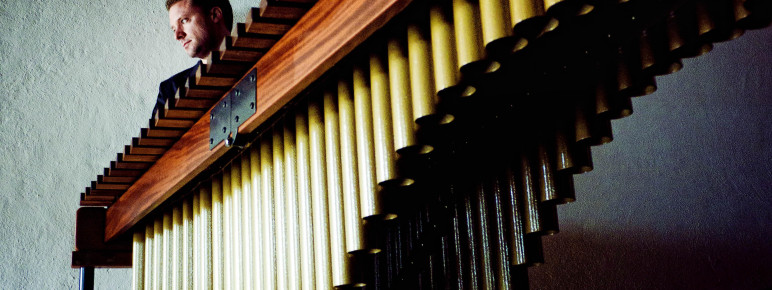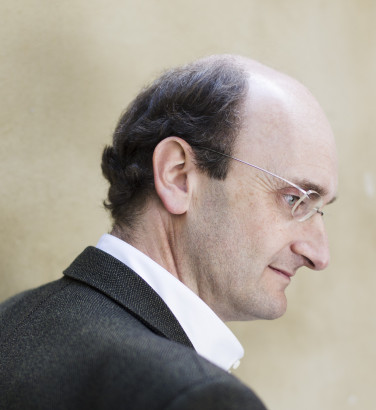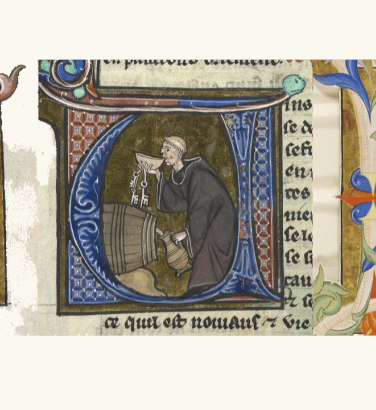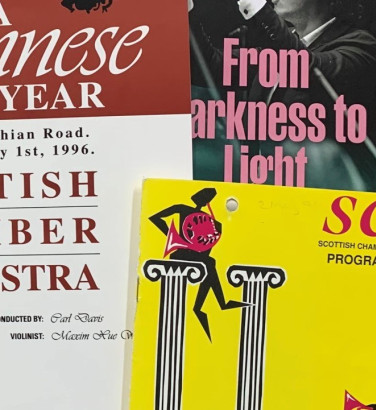
An introduction to keyboard percussion instruments
6 Oct 2025
News Story
Is the instrument in front of Colin Currie (a) a glockenspiel, (b) a marimba, (c) a vibraphone or (d) a xylophone? Answer at the end of this article. (Photo credit: Marco Borggreve)
The range of instruments covered by the term percussion that can seem rather bewildering in its diversity, the common denominator being that they are all played by being struck, shaken or scraped. How this is done can vary considerably: players can use anything from a part of their hands to some kind of beater or mallet. Beyond this, it's easy to overlook that there may be a further decision to be made about which part of the instrument to hit: if we take something as basic as a drum, striking the centre of the membrane is the most common choice, but the sound can be varied by moving closer to the edge of the frame over which it is stretched. Then there's the frame itself, often constructed from a variety of materials, each with their own sonic possibilities.
One of the first subdivisions that can be made within the percussion family comes down to whether a given instrument produces a recognisable note, i.e. if it is tuned or untuned. The latter category covers everything from the triangle to the gong, while an instrument with keys laid out like those of the piano unsurprisingly produces distinct notes. Chief among these are the xylophone, marimba and vibraphone, all of which are played standing, with the instrument itself roughly at hip height. The child's toy generally sold as a xylophone is actually a glockenspiel, another member of this group; distinguished by its relatively small range, it's also the most readily portable.
A further distinction can be made between the glockenspiel and xylophone by the material used to make their bars: those of the glockenspiel are metallic, while the xylophone’s are wooden – as are the marimba's, which is a larger instrument again. All three have tubular resonators placed under each key; those of the marimba can extend to the floor, which adds considerably to the instrument's weight. The xylophone can be up to ten times lighter, in part because its range (both more limited and higher-pitched) is produced with smaller keys.
With the vibraphone – the only one of these instruments to be included across the entirety of our Steve Reich+ programme (6-7 November) – we have a combination of the glockenspiel’s metallic keys and the marimba’s long resonators, together with an extra level of sophistication in the instrument’s construction. A series of metal discs lined up across the top of the resonators can be set to spin by switching on a motor mounted to one end of the keyboard, producing a vibration in the sound which gives the instrument its name. Notes played with the motor on seem to oscillate, coming in and out of focus at a speed that can be adjusted, though there is of course also the option of not turning the motor on in the first place. The scoring for Joe Duddell’s Snowblind, with which our Steve Reich+ concerts open, actually specifies it should be switched off throughout.
One other feature unique to the vibraphone is a dampening pedal, one which has the opposite effect of the sustain pedal on a piano. The latter prevents the sound of each note being cut short as the corresponding piano key is released, whereas the vibraphone’s notes can resonate for a long time (beyond a minute) if the dampening pedal is not used.
Leaving aside the four instruments themselves, let's turn to the material used to make the tip of the beater, which also affects the sound they produce. Yarn is the most common (especially for the marimba and vibraphone), while plastic and rubber probably present the widest range, depending on their hardness. Metal tips are only ever used on the glockenspiel – their hardness would cause irreparable damage to the others – and even then its keys are made of a more robust metal, to avoid wear and tear. There is also nothing to stop the player from using different types of beater simultaneously: given the range of the marimba and vibraphone, it can in fact make sense to use a harder material for the higher notes while favouring something softer for the lower ones, to aid their resonance.
A lot of these differences are of course easy to make out if you have the opportunity to examine the instruments up close. This isn’t always the case at a concert, especially if you are distracted by the player's technique once they brandish a pair of beaters in each hand. The size and timbre of the instrument will be your best guide if you struggle to identify one of them played live. It's easy to recognise the glockenspiel, the smallest and brightest-sounding (in keeping with the misnamed child's xylophone), and an oscillating sound gives away the vibraphone – and should its motor be switched off, listen out for the longer resonance time of its keys.
Differentiating between the xylophone and marimba can be harder: they both have wooden keys and (unless you see them side by side) knowing one is larger than the other may not be of much help. The length of the resonators will be the clincher: if they extend to the floor, this is to accommodate the deeper range of the marimba.
The instrument behind which Colin Currie is (just about) visible at the top of this article, with long resonators, wooden keys and – by the by – a hinge hidden beneath them, as though to emphasise its size, is therefore a marimba.
Related Stories
![]()
Andrew Manze: "I've always loved Viennese waltzes and polkas"
1 December 2025
Our Principal Guest Conductor is really looking forward to conducting our Viennese New Year concerts!![]()
The medieval carol
24 November 2025
For this year's Christmas article, we look back at some very early festive carols ...![]()
A history of the orchestral concert
17 November 2025
Is there such a thing as a standard concert format? Join us as we dive into the history of programming ...



